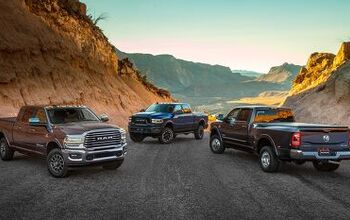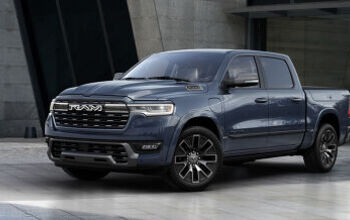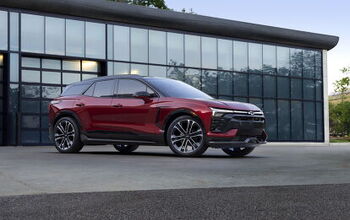Editorial: Canada Can Keep Kissing Auto Investment Goodbye
Globally, auto makers spent $17.6 billion on expanding manufacturing facilities – and none of that was spent in Canada.
Citing a study by the University of Windsor, The Globe and Mail reports that the last time any new investment was received by Canada’s industry was in 2012, when $180 million was spent on a single project. On the other hand, Mexico, which is enjoying a booming automotive sector, received $6.3 billion.
What was once the 4th largest vehicle assembly site is now the 10th largest, and output fell in 2013 by 4 percent. On the one hand, Canada is not alone. The report states that Germany has received no new investment over the past few years, and only nominal investments in Japan.
But all three countries face a similar problem. Nearby sites are cheaper to build cars in, at the expense of “domestic” locations. Former Easten Bloc countries like Poland, Hungary, the Czech Republic and Slovakia are popular sites for German OEMs, while Japanese auto makers have been ramping up production in Thailand. In both scenarios, the vehicles produced in those countries are considered to be just as high quality as their domestic counterparts, but at much lower costs.
Canada’s situation is particularly troubling. High costs for everything from labor to energy, combined with a reluctance on the part of the government (and general public) to match the generous subsidies offered by American and Mexican governments, has led to a major contraction of the auto manufacturing sector. Until recently, a high Canadian dollar was also weighing negatively on the sector, but a recent 10 percent haircut may help things along.
Canada will inevitably have to make the same choice that Australia faced just months ago: continue to offer subsidies to the auto industry to entice them to keep building cars in Canada, or watch it disappear. Proponents of subsidies argue that they are a pragmatic, reality-based choice given the current environment, and that the auto industry provides good, middle-class jobs in an economy that is in dire need of them.
Those arguing against will posit that the government should not be in the business of propping up uncompetitive businesses. The end of the auto industry will allow Canada to transition to a different kind of economy, and workers can simply go where the jobs are (namely resource and petroleum extraction in Alberta and other areas).
There are problems with both arguments. With a much smaller population than the United States, and a much higher standard of living than Mexico, continuing to compete in the subsidy game will simply be a race to the bottom for Canada. On the other hand, the notion that good jobs will materialize in place of auto manufacturing jobs lies somewhere on the spectrum between ideological fantasy and efficient-markets dogma. The expectation that laborers can pick up and go where the jobs are, in a quasi-nomadic fashion, ignores the many unquantifiable but tangible human and cultural factors that exist in the real world.
With that in mind, there’s one way to keep the workforce competitive and the economy strong, while avoiding the perpetual subsidization of the auto industry. Let the plants live or die on their own. Use the subsidy money to retrain former auto industry workers, where its picking up a new trade or more abstract programs like entrepreneurship training, business loans or anything else that can encourage productive activity in the economy.
It’s not like every plant will suddenly shut its doors either. Honda and Toyota will keep cranking out Civics and Corollas at their plants, which are the kinds of cars that Canadians have traditionally purchased (and given the way that current trends are going, are likely to keep buying). GM’s Oshawa plant, which builds the Impala, might not make it. And the Windsor plant, which builds the very popular Chrysler minivan, looks to be sticking around for at least a few years. If FCA wants to move production to Mexico or Italy or anywhere else in the global arena of automobile production, so be it. The money is better invested in the people of Canada. And with any luck, they’ll be able to vote with their newly fattened wallets when it comes time to purchase their next car.
More by Derek Kreindler
Latest Car Reviews
Read moreLatest Product Reviews
Read moreRecent Comments
- Dwford Will we ever actually have autonomous vehicles? Right now we have limited consumer grade systems that require constant human attention, or we have commercial grade systems that still rely on remote operators and teams of chase vehicles. Aside from Tesla's FSD, all these systems work only in certain cities or highway routes. A common problem still remains: the system's ability to see and react correctly to obstacles. Until that is solved, count me out. Yes, I could also react incorrectly, but at least the is me taking my fate into my own hands, instead of me screaming in terror as the autonomous vehicles rams me into a parked semi
- Sayahh I do not know how my car will respond to the trolley problem, but I will be held liable whatever it chooses to do or not do. When technology has reached Star Trek's Data's level of intelligence, I will trust it, so long as it has a moral/ethic/empathy chip/subroutine; I would not trust his brother Lore driving/controlling my car. Until then, I will drive it myself until I no longer can, at which time I will call a friend, a cab or a ride-share service.
- Daniel J Cx-5 lol. It's why we have one. I love hybrids but the engine in the RAV4 is just loud and obnoxious when it fires up.
- Oberkanone CX-5 diesel.
- Oberkanone Autonomous cars are afraid of us.


































Comments
Join the conversation
Sorry late night writing ( while in bed) tends to make me ramble on, I should know better. I am quite capable of formatting a proper paragraph, so criticism accepted.
@ scwmcan...I assume your an hourly {SWE}? in the St Kitts plant? I did 36 years at Oshawa. I'm glad to see St Kitts has called all the preferential hires back from Oshawa. The good news is you have an education. Keep your resume sharp, and stash some cash. BTW The folks at TTAC are always looking for inside people. Don't worry about you paragraphs etc. I hold the position, as most illiterate here. I'm not about to give that up. I'm looking forward to more comments from you.